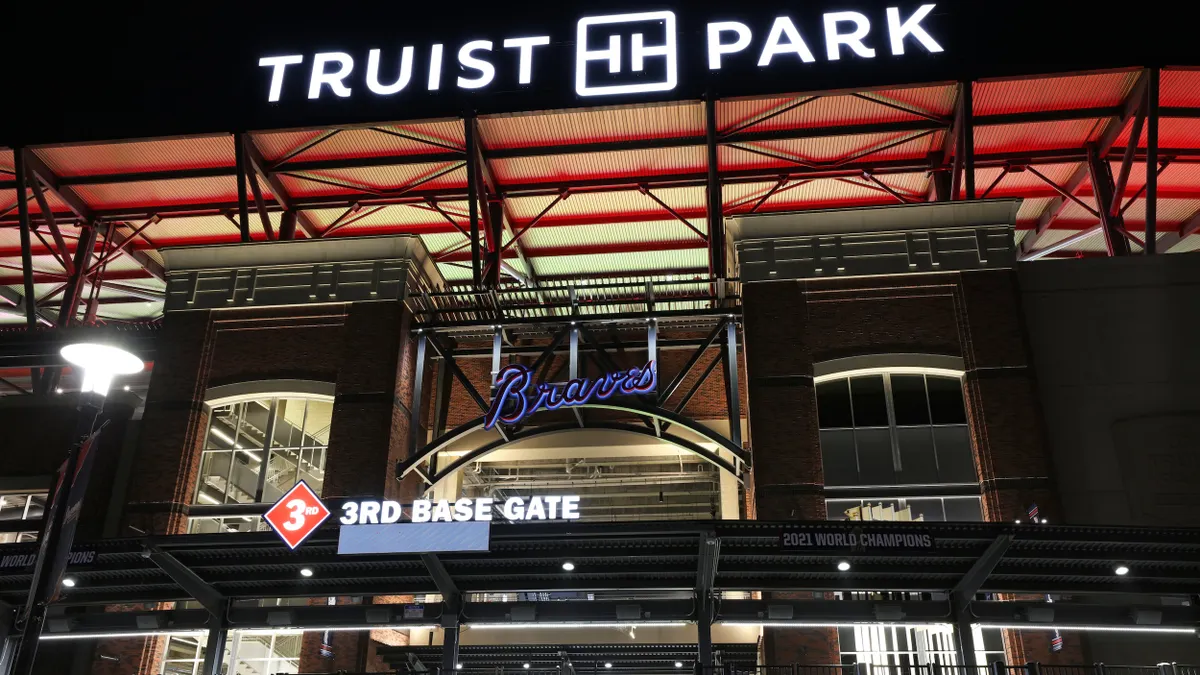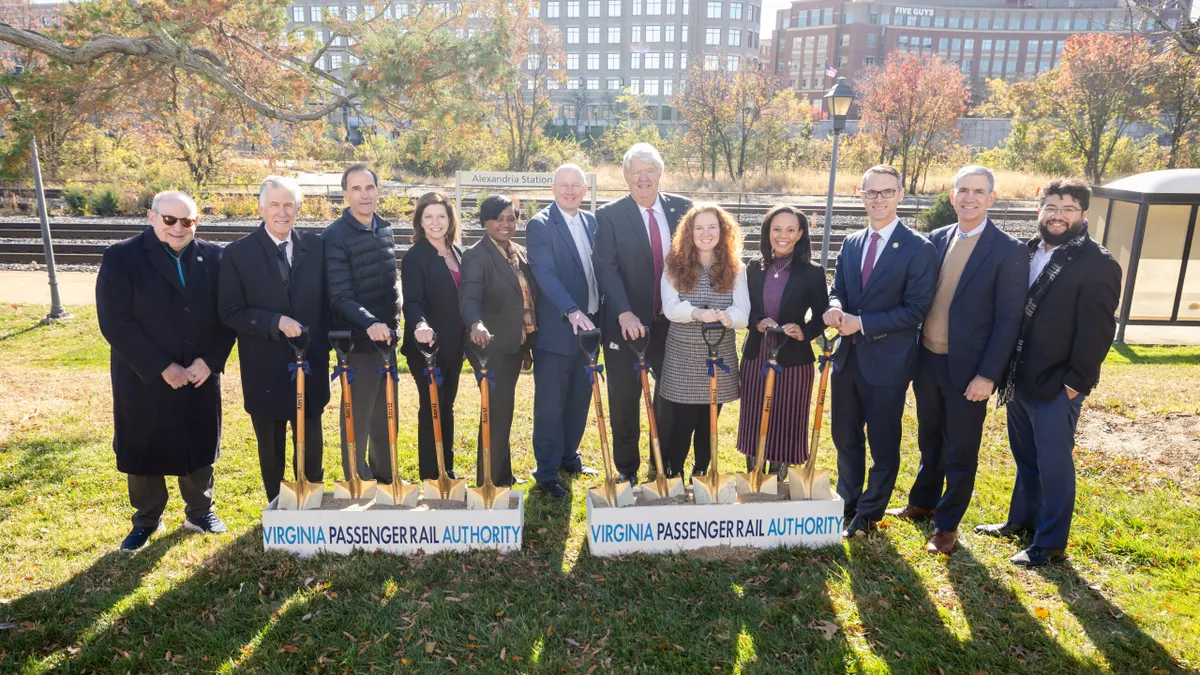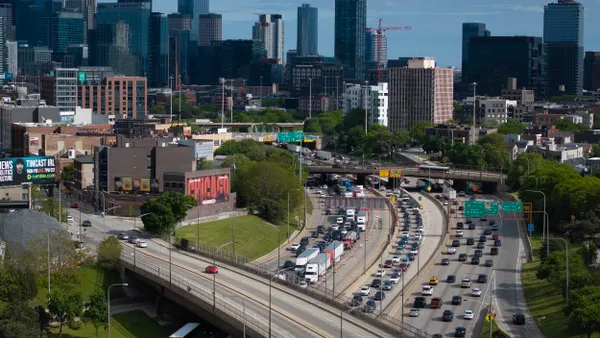Uber will test its flying taxi service — known as Uber Air — in Melbourne, Australia next year, company officials announced Tuesday at the Uber Elevate Summit in Washington, DC.
Melbourne will join previously announced cities Dallas and Los Angeles as a third test to start in 2020, in a move the company said would help alleviate growing traffic congestion. The on-demand electric vertical take-off and landing vehicles (eVTOLs, or flying taxis) could cut travel times from Melbourne International Airport to downtown to as little as nine minutes, and reduce the commute from the nearby city of Geelong to 14 minutes.
Uber chose the Australian city from a shortlist of other locations in countries including Brazil, France, India and Japan.
"A future urban aviation network…is not something we can build overnight," said Susan Anderson, general manager for Uber’s Australia, New Zealand and North Asia operations. "This announcement today marks the next step in our conversation with Melbourne and Australia about making this vision a reality."
To alleviate congestion and make people less reliant on personal cars, Melbourne and its state government of Victoria are also investing heavily in transportation and infrastructure projects.
"In this context, the opportunity to be at the next frontier of transport technology, it’s not just exciting,” Robin Scott, assistant treasurer of the Victoria government, said. "It’s absolutely necessary."
At the summit, Uber and AT&T also announced they will partner to build what Nikhil Goel, head of product for Uber Elevate, described as an "urban air mobility communications network for Uber.” That network will help services like Uber Air and the soon-to-launch Uber Copter service in New York City communicate with each other and with ground dispatch services. Goel added that the partnership will also explore how 5G can be leveraged for those communications.
More details on aerial service
Uber Copter, which is intended to connect John F. Kennedy International Airport to Lower Manhattan in around eight minutes, is seen as something of a test case for Uber's aerial on-demand transportation. Under a plan for operations, a rider hails an air taxi through the Uber app, is driven to a skyport for take-off, is flown with other passengers to land at another skyport, and then is picked up by car to get to the final destination.
That seamless transition between transportation modes may seem ambitious, but Stan Swaintek, director of operations at Elevate Uber, said it will be a “unique opportunity to demonstrate the power of the Uber platform.”
He also said by using Uber’s cloud-based platform, other problems associated with air travel, like long waiting times in departure lounges, could be solved to “give riders an hour of their time back.”
Goel said that time-saving opportunities will also include the ability for riders to watch the required airline safety video on the Uber app while they travel to the skyport. A boarding pass would then be pushed to the rider’s phone after check-in at the terminal.
Meanwhile, the company intends to keep track of operations and can adjust service based on demand and weather conditions.
"Uber Copter is fast forwarding the future to Uber Air," Swaintek said.
The price remains a sticking point, both for Uber Copter and for any subsequent Uber Air ventures. Company officials have said the price may be on the high side initially — up to $225 following the launch of Uber Copter — but as demand increases, those prices should become comparable to ride-hailing services, said Elevate Uber head Eric Allison.
"Our vision is that ... in the long-term, Uber Air, on a per-seat basis, will be competitive with car ownership," Allison said in a speech. "Our vision is that on a daily basis, it will be more economically rational for you to fly than you to drive."
Safety and regulations
While there appears to be a great deal of excitement building around Uber's aviation ambitions, speakers at the Uber Elevate Summit were keen to emphasize the need to have a strong culture of safety.
It comes with the company having made some missteps in other areas of its business. Last year, an Uber autonomous vehicle (AV) struck and killed a pedestrian in Tempe, AZ during tests. In a speech, Uber’s chief legal officer Tony West said the company learned valuable lessons from that incident, including the need for transparency, "even when it’s difficult."
"Safety at Uber is not just about the cars we have on the ground," West said. "And when it comes to Elevate, we have a lot that we can learn from the aviation industry about critical safety procedures, about data sharing, about effective collaboration."
There are also plenty of lessons to learn from the aviation industry, which has, for the most part, been notable for its commitment to safety.
“Uber Copter is fast forwarding the future to Uber Air."

Stan Swaintek
Director of Operations, Elevate Uber
Michael Quiello, vice president for corporate safety at United Airlines, said that reputations in the aviation industry are won and lost on companies’ safety records.
"It’s almost like the 1960s with the space race,” Quiello said during a panel discussion. "It’s an exciting thing to see from my point of view. But you’ve got to protect your reputational risk, and that comes by sharing the data."
It may be a tricky road ahead for Uber Air from a regulatory standpoint. In a speech before the start of the summit, Allison said that he did not believe new laws would be necessary to govern the use of flying taxis. And Kate Fraser, head of public policy for urban aviation, said it is important to engage with policymakers and regulators at all levels, especially given the complexities of aerial travel.
Compared to Uber’s other interests, she said the company needs a "more complicated engagement model than ever seen before at Uber." And that has kicked off in places like Dallas, where the company convened a working group to tackle issues like noise, zoning, planning and community engagement. The company also has its eye on two sections of FAA certification that it believes could help its flying taxis hit the skies.
In a keynote address, Transportation Secretary Elaine Chao said that those unanswered questions center on propulsion, range, speed, navigation systems and whether they are human-operated or if there is some kind of remote operation instead.
Chao also said there is uncertainty over how eVOTLs will be regulated: as manned helicopters, as drones, or as personal or commercial vehicles. But she said by keeping safety a top priority while ensuring innovation is encouraged, the federal government has a role to play.
"We will do so by engaging with new emerging technologies to address legitimate public concerns about safety, security and privacy without hampering innovation," Chao said.
In a separate speech, acting FAA administrator Dan Elwell said that regulators and businesses must prioritize regulations that ensure safety for the aircraft, airspace and operators — and that each area has its own unique challenges to tackle.
"It all boils down to proper certification of the vehicle, proper training for the operator or airman, and controlling the airspace in a way that quite simply keeps one vehicle from hitting another,” Elwell said.



















